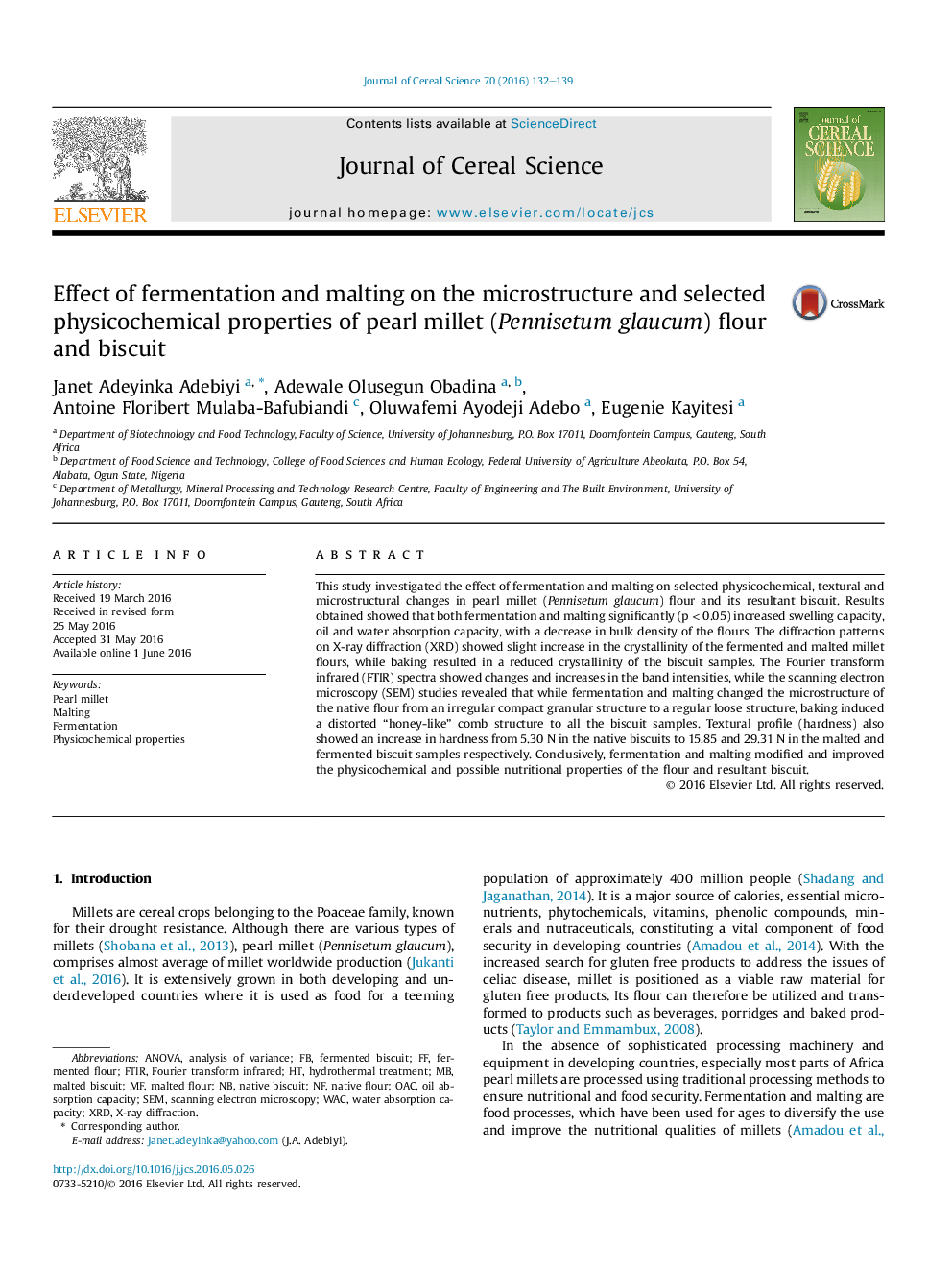| Article ID | Journal | Published Year | Pages | File Type |
|---|---|---|---|---|
| 4515486 | Journal of Cereal Science | 2016 | 8 Pages |
•Fermented and malted pearl millet flours had higher water and oil absorption capacities.•Heat processing reduced crystallinity.•Baking caused a distorted “honey comb like” structure to the biscuit samples.•Biscuit samples obtained from the fermented pearl millet flour had the highest textural hardness.
This study investigated the effect of fermentation and malting on selected physicochemical, textural and microstructural changes in pearl millet (Pennisetum glaucum) flour and its resultant biscuit. Results obtained showed that both fermentation and malting significantly (p < 0.05) increased swelling capacity, oil and water absorption capacity, with a decrease in bulk density of the flours. The diffraction patterns on X-ray diffraction (XRD) showed slight increase in the crystallinity of the fermented and malted millet flours, while baking resulted in a reduced crystallinity of the biscuit samples. The Fourier transform infrared (FTIR) spectra showed changes and increases in the band intensities, while the scanning electron microscopy (SEM) studies revealed that while fermentation and malting changed the microstructure of the native flour from an irregular compact granular structure to a regular loose structure, baking induced a distorted “honey-like” comb structure to all the biscuit samples. Textural profile (hardness) also showed an increase in hardness from 5.30 N in the native biscuits to 15.85 and 29.31 N in the malted and fermented biscuit samples respectively. Conclusively, fermentation and malting modified and improved the physicochemical and possible nutritional properties of the flour and resultant biscuit.
